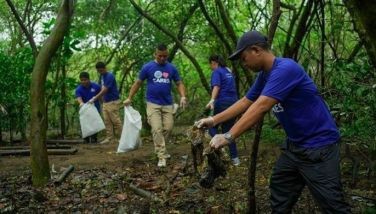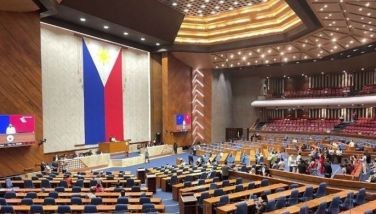Braving the storm

In the Philippines, there are many things we have to accept. We must accept that we are an archipelago, and that storms and typhoons will come through the country yearly, often leaving devastation in their wake. We have to accept this because they are a part of nature, and we can’t change that. However, we don’t have to accept that there is nothing we can do to be better prepared.
We already know that we’re going to face storm season every year. The only thing that’s changed is when we expect the storms to arrive. Thanks, in no small part, to climate change, the seasons have been changing. We usually expect the rainy season to start around June and last until August.
Storms in September used to happen occasionally, but anything after that was uncommon. Now though, the seasons seem to have moved. Storm season starts later, and rains sometimes last until December. Even the minimal cold season we usually get is shorter now. It used to be from mid-December through January. Now, we’re lucky if we get two weeks of pleasant chill.
This change in seasons happened over the past couple of years. And it’s becoming the new norm. So, knowing that, we also have to change our disaster preparedness plans. The Philippines has always been reactive regarding how we deal with disasters. We seem to work under the assumption that we’ll always be able to fix things “after the fact.”
This is a dangerous way of thinking, and many people suffer because of it. The recent tropical storm Paeng (international name: Nalgae) is the newest example of the dangers of reactive thinking. According to the National Disaster Risk Reduction and Management Council report, Paeng has claimed the lives of up to 98 Filipinos (as of this writing). Many of them were from the Bangsamoro region.
There are several still missing. Ironically, for a storm that ended up being as strong as it was, we didn’t hear much about it beforehand. I have to hand it to our disaster preparedness teams – recently, we seem to be trying to refine our early warning systems. The more time people can prepare, the better their chances of weathering the storm.
In the past year, we have been given an advanced warning for storms that could be very dangerous, giving people more time to get to shelters or to batten down the hatches. And while that’s a step in the right direction, more should be done to prepare for communities in dangerous areas that are prone to flooding and landslides.
It would be a good use of money and resources to invest in better infrastructure and response teams for storms, especially since storms are never a one-time deal in the country. Once we have better systems in place and utilize best practices, we will be able to respond better and mitigate the potential devastation of a super typhoon.
Unfortunately, we were not prepared for the storm over the weekend, and it wasn’t all over the news like previous potential super typhoons. But from all the videos and stories coming in, Paeng was incredibly strong.
The storm impacted over 570,000 families and over one million Filipinos across 17 regions. Presently, we have over 80,000 families in evacuation centers and needing aid. The government has currently provided over P30 million in aid distributed through food packs, hygiene kits, and financial aid.
And while that’s good, it’s not going to be enough to help people who have lost everything get back on their feet. We must find a way to get through just providing help after the storm ravages a community. We need to start finding ways to help communities better prepare themselves. After all, if we create a sustainable support system in areas often hard hit by storms, they will be better prepared to face them when they come.
I continue to pray for our fellow citizens impacted by the storm and hope we get some reprieve from the rain as the country again gets back on its feet once again.
* * *
We have been dealing with increasing inflation these past few months, and it’s hit every part of our lives. According to the Bangko Sentral ng Pilipinas, they foresee inflation hitting its high point in October and possibly easing in the months ahead. But, of course, things will get worse before they get better.
It’s an optimistic outlook considering the global economy is still rapidly deteriorating. Many still predict a global recession next year, which will hit everyone. I touched on it previously, but we’re a global economy. And while in the Philippines, our economy is more driven by domestic consumption, it doesn’t mean a global recession won’t severely impact us.
After all, we still import a large number of products. Our economy is primarily driven by Filipino dollar earners in other countries. OFWs and BPOs – the biggest contributors to the Philippine economy – will likely be negatively impacted by the worldwide recession. And this will inevitably come back around to affect us too.
Alongside disaster preparedness, we also need to prepare for this as early as now. Whether it’s options on our imports or robust economic policies to help mitigate the potential impact of a global slowdown, we need to be better prepared as a country.
On an individual level, there isn’t much we can do except revisit our personal consumption. This is something we should already begin doing as early as now so we’re better prepared if and when the time comes.
- Latest
- Trending
































